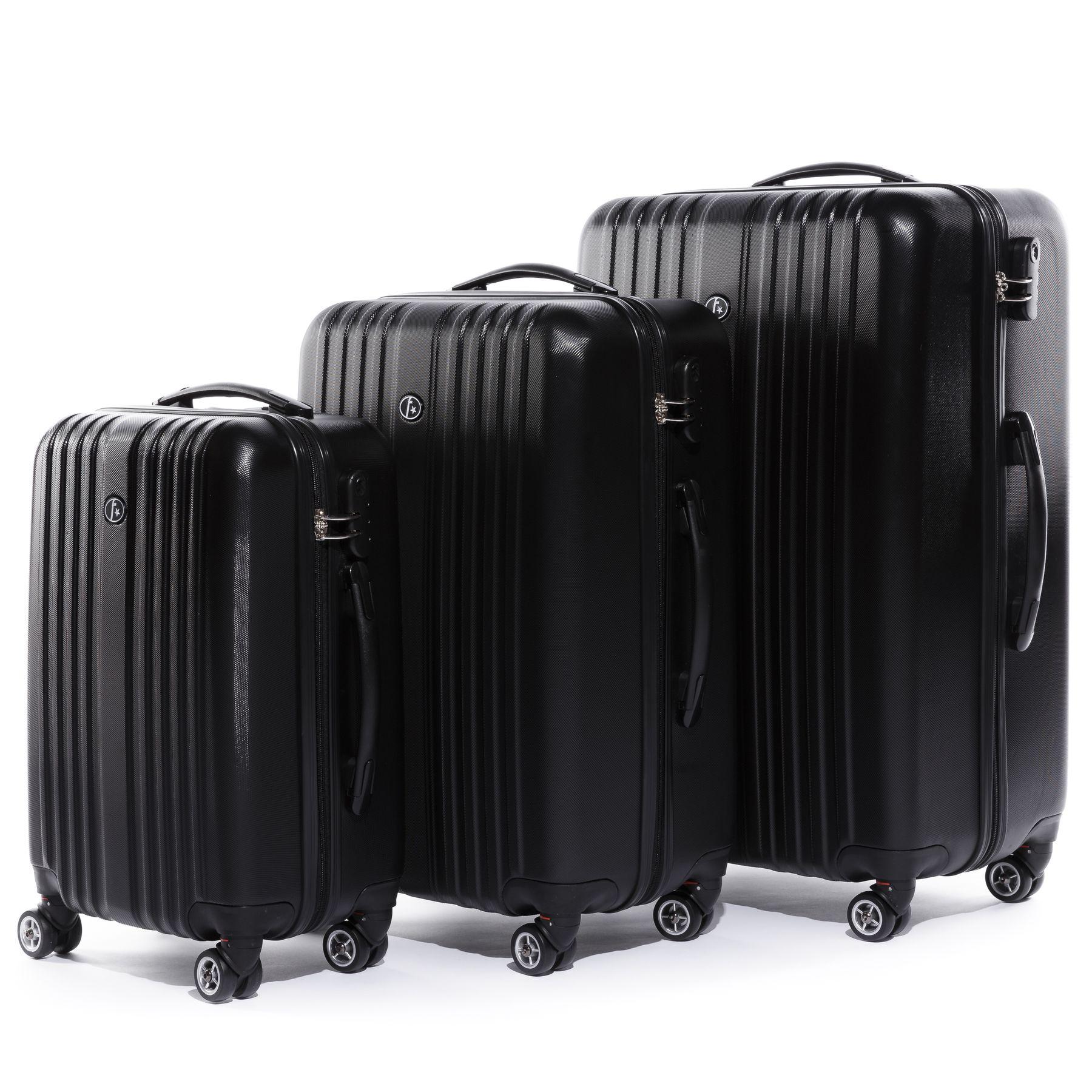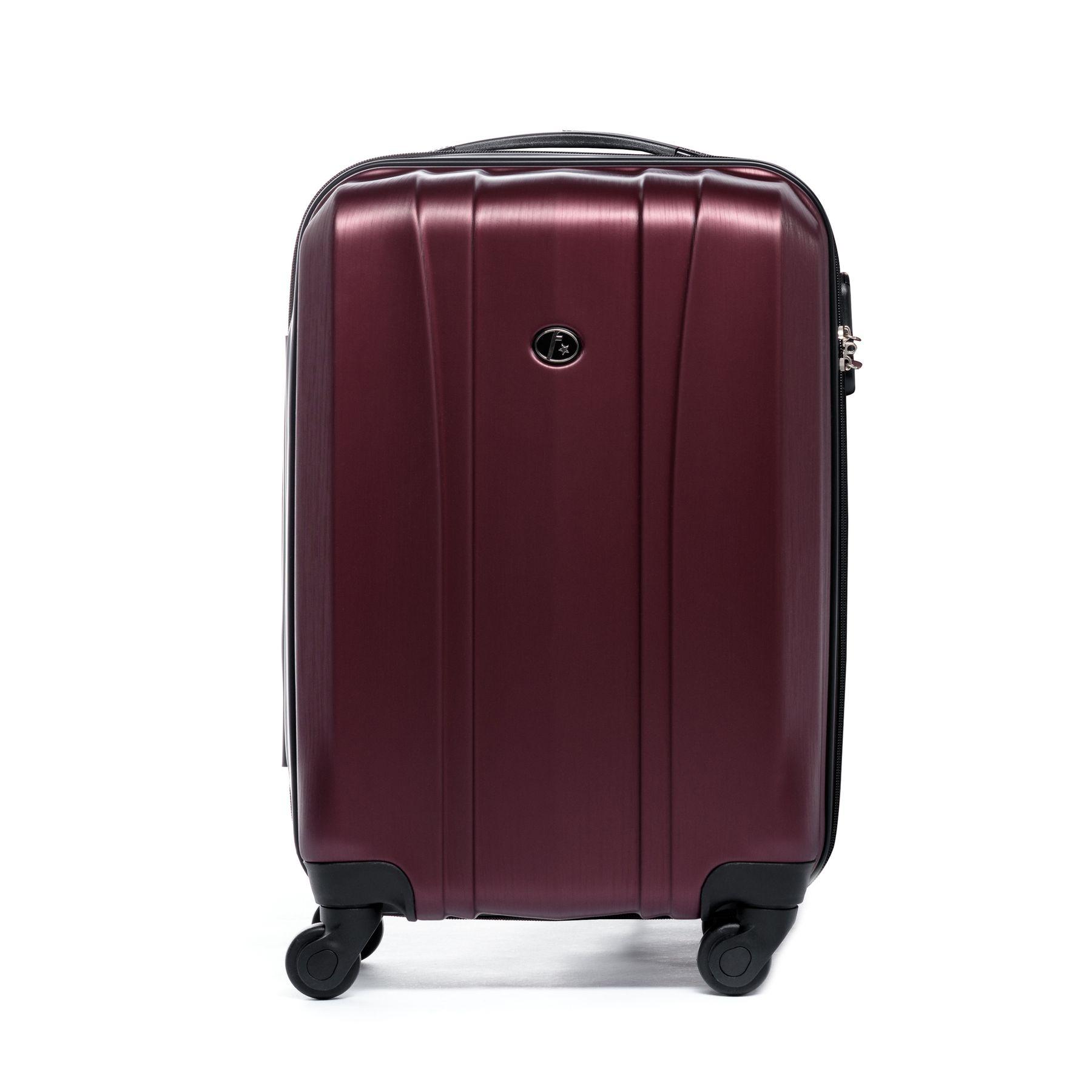
Luggage Guide
...an overview for all types of travel luggage
...Before the holiday is after the holiday: The suitcase organization is the most important point.
After many stressful weeks there is nothing better than an extensive and relaxed holiday away from everyday life. Whether sightseeing in New York, diving in Bali, shopping in Milan, exploring through Peru or hiking in Norway - a suitcase is an absolute must have for any trip. But in the run-up many there are many questions about the travel luggage. In our suitcase guide we give the most important answers to cases, trolleys, hand luggage and beauty cases. We reveal, among other things, how you pack your suitcase correctly, what guidelines are there for hand luggage and how business travelers can store their clothes wrinkle-free in their suitcases.
Hard cases, soft cases, trolleys, beauty cases and clothes bags
When choosing the right suitcase, the first question: hard-shell case or soft-shell case? As the name suggests, hard-shell cases are made of a durable material, which makes them very robust. During transport, the hard case is protected from external concussions by the stable surface. The models are also suitable for air travel and are also available with TSA locks, which can be opened by airport staff in case of doubt using a universal key. This prevents luggage from being broken.
Compared with hard-shell cases, soft-shell cases are significantly lighter and have a flexible material, which optimizes the space inside. Soft-shell cases are preferred by travelers who want to transport as much weight as possible - for example for stays lasting several weeks. Functionality also distinguishes 2 or 3 suitcase sets, whose individual suitcases have different sizes and can therefore be combined with each other.
The flexible roller systems make trolleys extremely easy to handle. Due to the compact dimensions, the models are perfect companions for business or spa trips. Even smaller are beauty cases with and without rollers for the hand luggage. Ideal for wellness weekends and ski trips. Clothes bags are predestined for wrinkle-free transport of clothing. These are, for example, interesting for business travelers who want to spend their business trip in a perfect suit that they do not have to iron again before the meeting.
What suitcase sizes are there and which luggage volume do I need?
The right suitcase size is an important decision. Since no uniform size exists, each manufacturer uses its own dimensions. Generally there are suitcases in the sizes XS, S, M, L, XL and XXL. A reliable source are these altitudes:
• Cases in XS are up to 50 cm high
• Cases in S are 51 to 55 centimeters high
• Cases in M are 56 to 64 centimeters high
• Cases in L are 65 to 74 centimeters high
• Cases in XL are 75 to 79 centimeters high
How heavy can hand luggage be & what are you allowed to carry in?
Hand luggage (or also carry-on luggage, cabin luggage) are compact cases and travel bags that are used for private and professional short trips. The compressed models can easily be stowed in the trunk of the car, on the shelf in the train or as a hand luggage in the aircraft. It should be taken into account that not every suitcase in the airplane is also permitted as hand luggage. This depends on the size of the suitcase as well as the different specifications of the airlines. Accordingly, it is advisable to check which board baggage is permitted and which items are allowed as hand luggage before the start of the journey on the website of the airline. As a rule, the hand luggage has a limit of 20 kilograms. It should also be taken into account that containers holding more than 100 milliliters are not allowed into the hand bag.
If you enter the USA, you should close your case with a TSA lock. TSA stands for Transportation Security Administration. If the suitcase has to be opened for entry for any reason, the lock can be opened and closed by a key of the TSA.
Other locks may be broken by American customs. This does not mean that TSA locks are safer, but the danger that the entire lock will be destroyed by security measures is banished.
In addition, the journey type plays an essential role. In the case of air travel, different provisions apply than for cruises. Each airline has its own guidelines, but for ship travel, there are no restrictions on volume and quantity. Apart from cabin luggage, the airlines generally rely on the standard belt size of 158 centimeters. Anything over it is declared as an over-luggage and is cost-accounting. With the formula height + width + depth the belt measurement can be easily calculated. In addition, the volume of luggage, which is directly related to the duration of travel, should be included:
• 1 to 2 days = less than 40 liters
• 3 to 7 days = approximately 40 to 70 liters
• 8 to 11 days = approximately 70 to 90 liters
• 12 to 15 days = approximately 90 to 125 liters
• More than 16 days = more than 125 liters
How should I pack my suitcase and what utensils should be left at home?
Cases can be packed in a variety of ways. With some smart tricks, you can avoid many unnecessary things in the travel baggage. This saves a lot of time and nerves. First, the following questions are to be answered:
• How many days are you planning to spend on holidays?
• What is the weather at the resort?
• What kind of clothing do you need?
• What activities and events are planned?
To pack as many clothing as possible in the suitcase, it is advisable to use sweaters, t-shirts, pants, skirts and dresses with great care. Vacuum bags provide additional storage space. However, one should not fully fill the suitcase, since often new items are bought on holiday and these must also be placed in the travel luggage when returning. Otherwise, an additional payment is due for the over-luggage.
To pack as many clothing as possible in the suitcase, it is advisable to use sweaters, t-shirts, pants, skirts and dresses with great care. Vacuum bags provide additional storage space. However, one should not fully fill the suitcase, since often new items are bought on holiday and these must also be placed in the travel luggage when returning. Otherwise, an additional payment is due for the over-luggage. It is also recommended to pack utensils such as shoes or jeans first, as they are the hardest. Then you can place the rest of the clothing step by step. Clothing made from sensitive materials, such as shirts should be placed either in the upper part of the suitcase or behind the net. Gaps can be filled with smaller things such as cosmetic products (creams). Towels and hair-dryer should be left at home, as both are the basic equipment of each hotel. In hot countries, a sun cream is indispensable - so it has to be in the suitcase. However, mosquito repellents should be purchased locally, because the domestic products are more effective.
Couples have the possibility to split the luggage on both suitcases. Even if the bag is lost on journeys, everyone has enough clothes for the transitional time. A helpful tip is to bring underwear, swimwear, socks as well as necessary medication in the hand luggage. This is also a good idea for smartphones, tablets, notebooks and cameras. The electronic equipment may be damaged in the case. Liability is limited in the event of damage.
For children, it is not easy to distinguish which utensils they really need on vacation and which do not. Parents are well advised to establish a limited number of cuddly toys. This does not overload the case with unnecessary weight.
Travel detergents allow to clean contaminated garments by hand in the sink or bathtub. This is especially worthwhile for longer stays abroad. Alternatively, you can inform yourself before the holiday whether there is a washing service at the campsite, in the hotel or in private accommodation.




